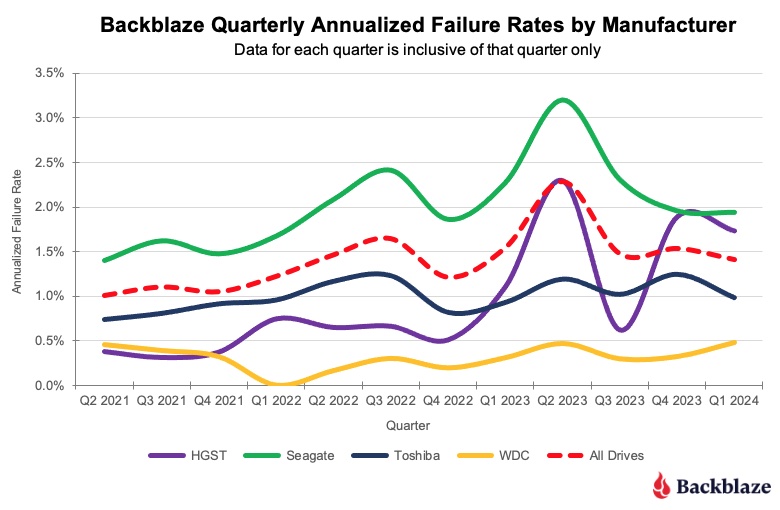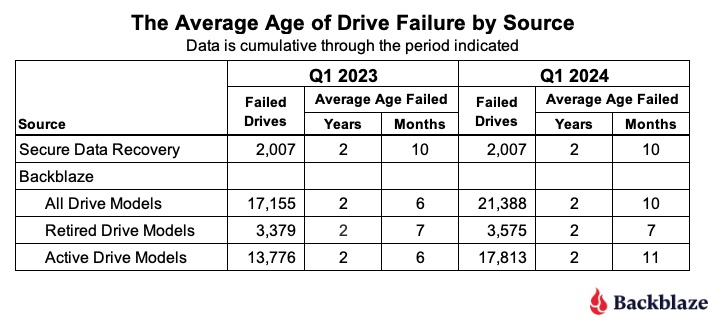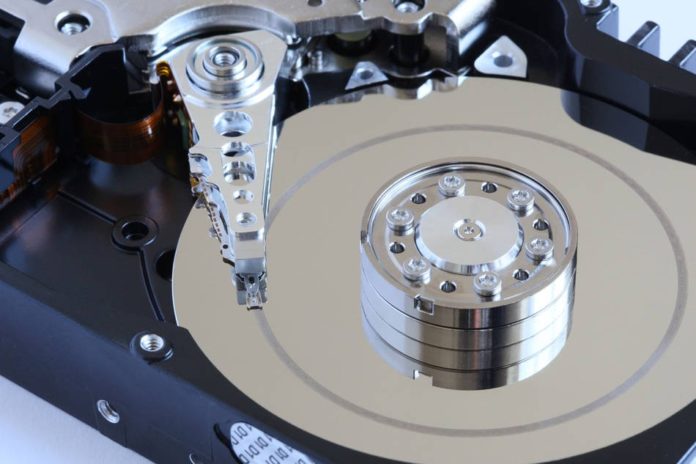Cloud storage and data backup firm Backblaze has published the latest annual failure rates (AFRs) of the disk drives it uses to supply services to customers in its datacenters.
As of the end of Q1 2024, Backblaze was monitoring 279,572 drives in its cloud storage servers, located around the world.
In this group the company identified 275 individual drives which exceeded their manufacturer’s temperature specification at some point in their operational life. As such, these drives were removed from AFR calculations.

The remaining 279,297 drives were divided into two groups. The primary group consists of the drive models which had at least 100 drives in operation, as of the end of the quarter, and which accumulated over 10,000 drive days during the same quarter. This group consists of 278,656 drives grouped into 29 drive models.
The secondary group contained the remaining 641 drives that did not meet the criteria noted. They were not measured for AFR.
The AFR for Q1 2024 was 1.41 percent. That’s down from Q4 2023 at 1.53 percent, and also down from one year ago (Q1 2023) at 1.54 percent. The continuing process of replacing older 4 TB drives is a “primary driver” of this decrease, said Backblaze, as the Q1 2024 AFR (1.36 percent) for the 4 TB drive cohort is down from a high of 2.33 percent in Q2 2023.
In Q1 2024, three Seagate drive models had zero failures:
- 16 TB Seagate (model: ST16000NM002J)
- Q1 2024 drive days: 42,133
- Lifetime drive days: 216,019
- Lifetime AFR: 0.68 percent
- Lifetime confidence interval: 1.4 percent
- 8 TB Seagate (model: ST8000NM000A)
- Q1 2024 drive days: 19,684
- Lifetime drive days: 106,759
- Lifetime AFR: 0.00 percent
- Lifetime confidence interval: 1.9 percent
- 6 TB Seagate (model: ST6000DX000)
- Q1 2024 drive days: 80,262
- Lifetime drive days: 4,268,373
- Lifetime AFR: 0.86 percent
- Lifetime confidence interval: 0.3 percent
“All three of these drives have a lifetime AFR of less than 1 percent, but in the case of the 8 TB and 16 TB drive models the confidence interval is still too high,” said Backblaze. “While it is possible the two drives models will continue to perform well, we’d like to see the confidence interval below 1 percent, and preferably below 0.5 percent, before we can trust the lifetime AFR.”
Backblaze also took a look at the average age in which a drive fails. Over the past year, it recorded 4,406 failed drives. The average age of failure for all of the Backblaze drive models went up from two years and 6 months to two years and 10 months.

With the retired drive models, there were three, totaling 196 drives, that moved from active to retired from Q1 2023 to Q1 2024. The average age of failure for the retired drive cohort remained at 2 years and 7 months over the year.
For the active drive models, the average age of failure for each drive went up from 2 years and 6 months to 2 years and 11 months.
“This suggests that once retired drive models are removed from service, the average age of failure for the retired drive models will increase,” said Backblaze. It thinks the average age of failure for its retired drive models will eventually exceed 2 years and 10 months. Further, it predicts the average age of failure will reach closer to 4 years for the retired drive models, once its 4 TB drive models are removed from service.
For lifetime reviews, a drive model was required to have 500 or more drives as of the end of Q1 2024, and have over 100,000 accumulated drive days during their lifetime. This resulted in 277,910 drives grouped into 26 models.
With three exceptions, the confidence interval for each drive model is 0.5 percent or less at 95 percent certainty. For the three exceptions – the 10 TB Seagate, the 14 TB Seagate, and the 14 TB Toshiba models – the occurrence of drive failure from quarter to quarter was “too variable” over their lifetime. This volatility has a negative effect on the confidence interval.
“The combination of a low lifetime AFR and a small confidence interval is helpful in identifying the drive models which work well in our environment,” Backblaze said.
It also sought to find out its best 12, 14, and 16 TB performers when it came to lifetime AFR. These are:
- 12 TB drive models – The three 12 TB HGST models are “great performers”, but are hard to find new. Western Digital, which purchased the HGST drive business in 2012, is using its own model numbers for these drives, “so it can be confusing”. “If you do find an original HGST, make sure it is new,” said Backblaze.
- 14TB drive models – “These models look to be solid”: the WDC (WUH721414ALE6L4), the Toshiba (MG07ACA14TA), and the Seagate (ST14000NM001G).
- 16TB drive models – All six drive models “performing well to this point”, although the “WDC models are the best of the best to date”.








